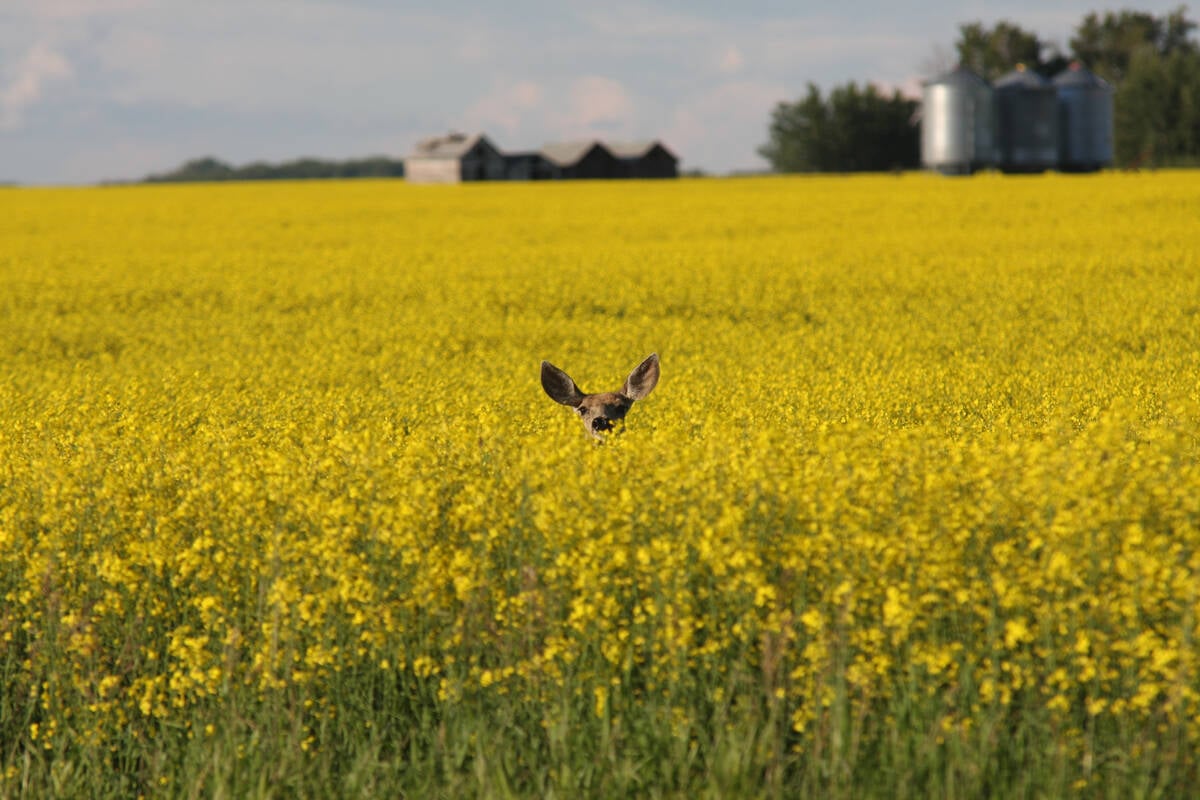Researchers have taken a big step toward producing a more effective vaccine against bluetongue, a viral disease that affects sheep, cattle, and goats.
The research, published in Proceedings of the National Academy of Sciences,could provide scientists with the tools to develop vaccines with useful new properties.
Transmitted by biting midges, bluetongue symptoms include high fever, excessive salivation and swelling of the face and tongue, with the tongue turning blue. It can also cause feet lesions and lameness, which can lead to knee-walking in sheep. As cattle constantly shift position to relieve foot pain, bluetongue has been nicknamed the dancing disease.
Read Also

Drones now used to assess wildlife crop damage in Saskatchewan
Wildlife damage in Saskatchewan crops is now assessed by drones and artificial intelligence.
Historically, it has been a disease of African livestock, but since 1998, the disease has been seen in Europe.
In 2007, it was a serious threat to livestock in Scandinavian countries and it reached Suffolk, England, where a Highland cow was diagnosed. For several decades, bluetongue has been observed in Asia, Australia, the Middle East and the United States.
Its rapid expansion into new habitat is believed to be the result of global warming. The disease is economically crippling and kills up to 70 percent of the sheep it infects.
“We’ve developed the tools and provided the instruction manual for developing new, more effective bluetongue vaccines,” said team leader Polly Roy, professor of virology at the London School of Hygiene and Tropical Medicine.
“This will not only be useful for combating bluetongue, but will provide insights into fundamental virus assembly that will be useful for producing vaccines for other viruses.”
Roy said the disease was complex and had a relatively difficult genome to work with. Assembling it in a test tube proved to be especially challenging.
“People were doing some work on it, but nothing was known at the molecular level,” she said.
“The virus has a number of layers of protein, which is very different from other viruses. That made me very excited to find out how this virus worked and how it replicated and multiplied in the cells. I wanted to understand this as a model system because if you understand one virus, you understand many others.”
Roy and her team synthesized each of the virus’s gene and protein building blocks separately and then combined them to produce a functional virus particle. To check their success, they infected some midge cells with the synthesized virus.
She said that what had previously been a complex of proteins and other molecules “whirred into activity and started making copies of itself.”
Currently, bluetongue vaccines are produced by chemical treatment of virulent viruses to inactivate them. These vaccines are effective at preventing the disease, but it is hard to tell the difference between a vaccinated animal and an animal that has recovered from an infection.
The new approach developed by Roy’s team could help develop a vaccine that is tagged with a marker, making it easier to differentiate between the two and accelerate control of an outbreak.
Because of mutations, there are now more than 24 strains of the virus. For the next step, Roy wants to know all the stages of the virus, how they get into the cell and how they replicate.
“The more you know, the more you can think about how you can inhibit them.”
Roy’s work has excited the scientific community because of the potential it offers to make safer and more effective vaccines against a range of viral diseases.
“Using the tools of synthetic biology, we are now able to assemble viruses piece by piece in a way that gives us far greater understanding of how they work,” said Douglas Kell, chief executive of the Biotechnology and Biological Sciences Research Council that funded the research.
DISEASE AND CAUSE
• The blue tongue that gives the disease its name occurs only in a small number of cases.
• The disease is characterized by fever, hemorrhaging of the oral and nasal tissue, excessive salivation and nasal discharge. In acute cases, the lips and tongue become swollen.
• Lameness, due to swelling of the cuticle above the hoofs and emaciation, due to reduced feed consumption, may also be symptoms of this disease.
• The high fever in sheep results in wool breakage, adding to production losses.
• Animal carcasses and products such as meat and wool are not a method of spread.
– University of Minnesota centre for disease research and policy














